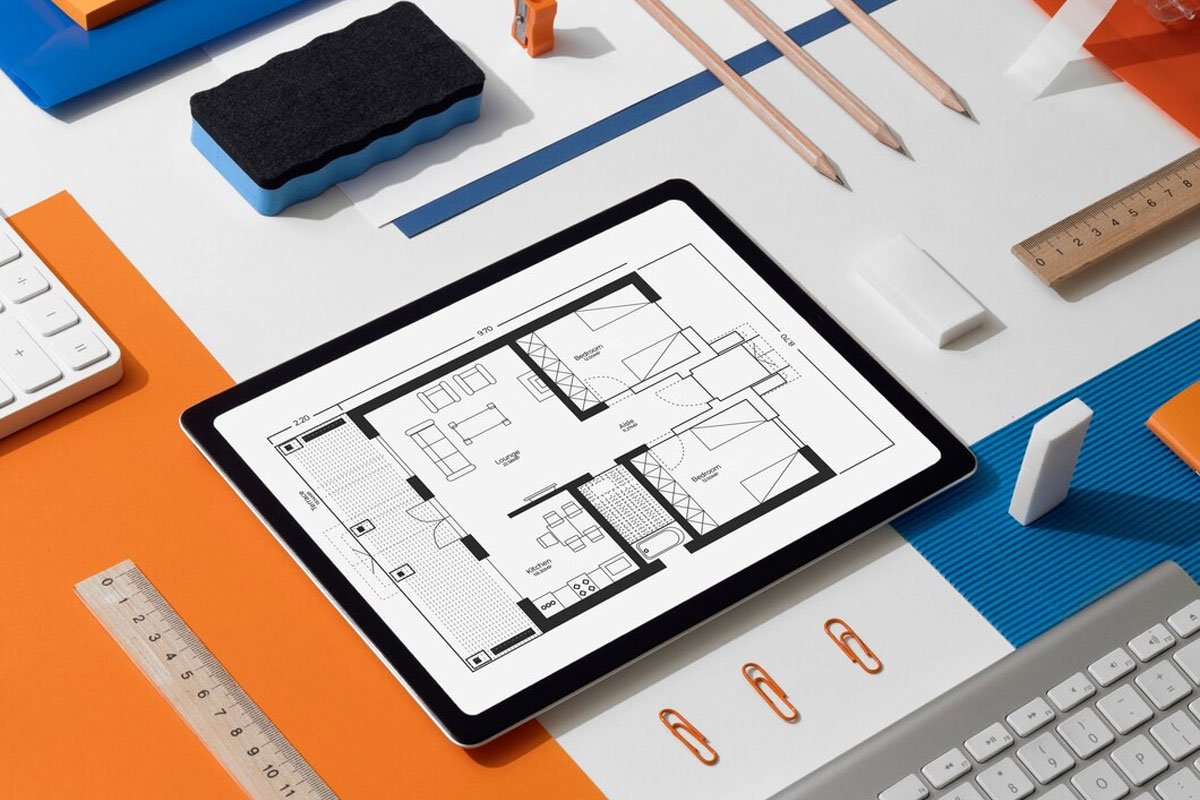Over the last couple of years, the entire business landscape has become excessively reliant on the latest fruits of the tech landscape. This is especially evident in areas like architecture that were, even before this digital revolution, very data-driven and open to various automation and production standardization forms. This change brought major improvements in efficiency, sustainability, and optimization of the entire construction sector. But, the fact remains that the career of an architect no longer involves core architecture skills expanded and refined by the usage of various digital tools. Knowledge and usage of these tools now represent the core skills architects need to get their careers off the ground. Well, let us take a look, at some of the best architectural tools that should help you climb this ladder much faster.
AutoCAD
When it comes to architecture, AutoCAD can be considered nothing short of a powerhouse and easily one of the best architectural tools in existence. Designed primarily for drawing, the platform also allows for seamless 2D and 3D rendering. A vast support base also entails constant updates and a wide selection of integrations with CNC for architecture and other technologies. The latest iterations of the product allow architects to plan the systems like plumbing, ductwork, and electric circuitry. Throw on top of the robust collaboration as well as a high level of customizability and you will get a tool whose only drawback is steep learning curve and overwhelming UI.
SketchUp

Well, if you feel you are not (at least for the time being) capable of dealing with the sheer immensity of what AutoCAD has to offer, you will be glad to know that SketchUp offers pretty much the same core functions but in a much more streamlined and manageable package. Of course, you still have the option of creating functional 2D and 3D models, and numerous export options that will help you fit this tool into pretty much any workflow. But, this simplicity comes at a certain cost, most notably in the form of the lack of available templates, scarce materials, and limited animation and advanced features.
Rhinoceros (Rhino)
Rhinoceros has often been cited as the best design tool for complex geometries and this hype is very well warranted. So, what sets this platform apart from other similar tools? Well, for the most part, the ability to use the basic ideas of parametric design to create incredibly detailed and organic 3D models. So, take some time to learn how to use Rhino because you will need it sooner than later. The vast array of plug-ins, overall ease of use, and the ability to use the platform for numerous design areas, as well as the very approachable price make Rhino a product you should keep on your radar.
Autodesk Revit
Revit is a very popular BIM-oriented package that, much like the previous mentions, allows users to create models using both 2D and 3D interfaces. The feature that helps this product stand out from the rest is the ability to produce near-photorealistic renderings of these models and experience how their creations would look if used in real-life scenarios. The other standout capability comes in the form of the ability to create detailed documentation regarding all aspects of the models with just a couple of clicks. If you are ready to deal with rather pricey updates coming each year, this is a parametric, cloud-compatible powerhouse.
3ds Max
All platforms we have covered so far excel in one area or another. Well, 3ds Max puts its eggs in the basket of highly effective 3D rendering. That doesn’t mean that the tool doesn’t check all the other standard BIM boxes. But, you will get the best experience if you are expecting a simple interface, the ability to quickly create complex 3D models, and then lay back and enjoy these models enveloping in front of your eyes in highly realistic, premium graphics. You can look at the built-in support for new visual effects as an added benefit. So, if you are ready to deal with a hefty $215 monthly subscription, knock yourself out and enjoy.
Vectorworks Architect
To put it simply, Vectorworks is a great drafting program. When it comes to other aspects of design and BIM, you will pretty much find a bunch of other tools that outclass this product in one area or another. But when it comes to drafting and having a great level of control over how your sketches look, this platform packs a rock-solid package. It also allows for a good level of collaboration, documentation, and even analysis. Vectorworks also leverages robust support for third-party APIs so it can be easily integrated with other products. It makes an overall excellent on-the-go solution.
Blender
This is yet another product that puts a heavy emphasis on visualization and architectural animation. What makes it one of the best architectural tools is a very clean interface (hard to master but a joy to use), light linking features, and very efficient and accurate shaders. On the other side, we need to point out that the viewer compositor is somewhat limited and animation tools fall more on the underwhelming side. But, when all is said and done, this tool is open-source and completely free, so there is very little room for complaints. And if you feel creative, you can adjust the tool according to your tastes.
Adobe Photoshop
Yeah, we know – Photoshop can’t exactly be cited as one of the great architectural tools. But, its place in the world of design is cemented. Yes, even the greatest platforms we covered here produce the output that needs a bit of glow up here and there. This is where Photoshop kicks in with full force. We would go as far as to say that Adobe’s flagship product is critical for putting the final layer of polish on your design and renderings. Textures, small fixes, image alterations… Anything that doesn’t rely on BIM can’t be performed better anywhere else.
Final touch
Well, we hope you have enjoyed this roundup of the best architectural tools you can currently find on the market. Of course, keep in mind that this is only the tip of the iceberg and that, depending on your personal needs, you can find a bunch of other tools that will successfully cover these bases. But, as a core short-list… You will find everything you need to get you started here. The architecture is becoming increasingly dependent on the latest tech and design tools. Be sure to master these essentials as soon as possible.


